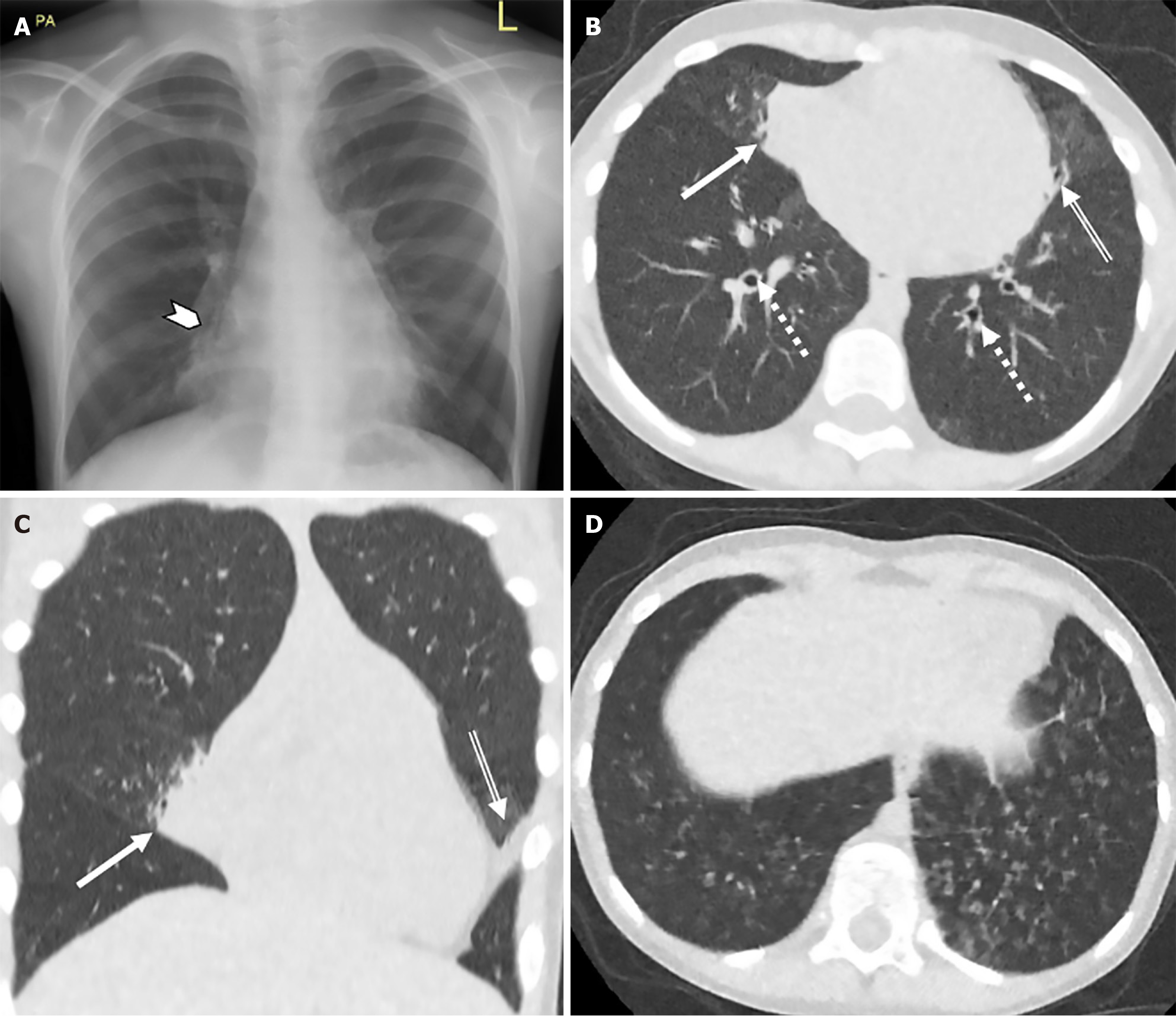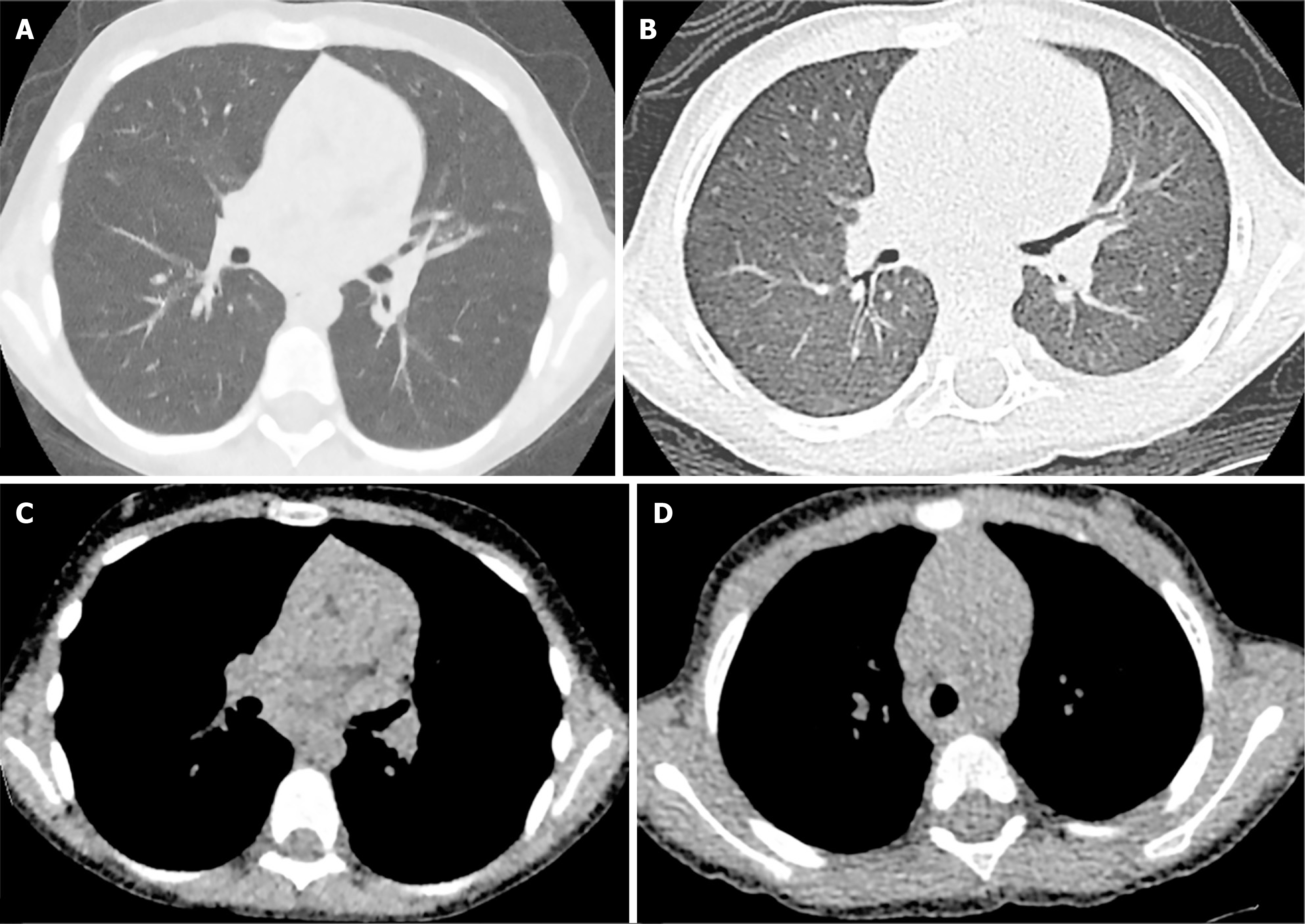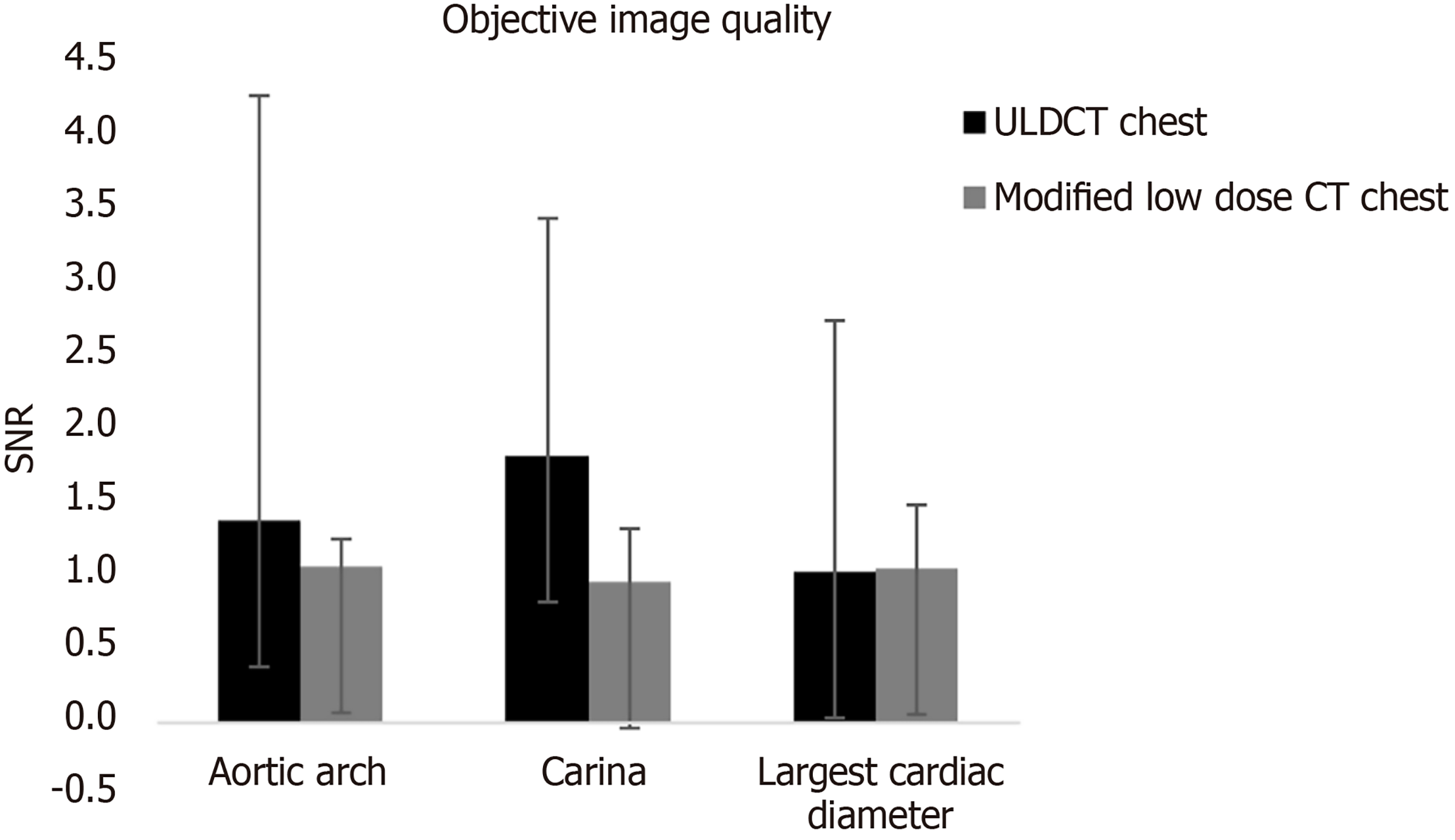Copyright
©The Author(s) 2025.
World J Radiol. Aug 28, 2025; 17(8): 110407
Published online Aug 28, 2025. doi: 10.4329/wjr.v17.i8.110407
Published online Aug 28, 2025. doi: 10.4329/wjr.v17.i8.110407
Figure 1 Chest radiography and ultra-low dose computed tomography chest assessment of structural lung pathology.
A: Chest radiography; B: Axial ultra-low dose computed tomography (ULDCT); C: Coronal ULDCT; D: Axial ULDCT with lung windows of a 7-year-old female with dense medial middle lobe consolidation (solid arrow & arrowhead), bilateral bronchiectasis (dashed arrow), lingular atelectasis (double line arrow) and basal centrilobular ground-glass nodules (D). These representative images demonstrate the superiority of ULDCT in assessment of structural changes relating to primary ciliary dyskinesia in comparison to plain radiography.
Figure 2 Comparison of ultra-low dose computed tomography chest and modified low dose computed tomography chest protocols.
A-D: Comparison of axial ultra-low dose chest computed tomography (CT) in lung windows (A) and soft tissue windows (C) and modified low dose chest CT images in lung windows (B) and soft tissue windows (D) in the same paediatric patient acquired 7 years apart. These images demonstrate the acceptable assessment of lung structure in ULDCT chest imaging.
Figure 3 Objective image quality comparison.
Chart depicting mean signal to noise ratio (SNR) for the ultra-low dose CT (ULDCT) Chest and modified low dose CT chest protocols at each of the three levels assessed. Data are plotted as mean and standard deviation as indicated by error bars. A comparable to improved SNR is evident in our novel ULDCT Chest protocol. SNR: Signal to noise ratio; ULDCT: Ultra-low dose computed tomography; CT: Computed tomography.
- Citation: Waldron MG, O'Regan PW, Lane M, Shet SS, Kakish E, Moloney F, Moore N, Murphy MJ, Beagan L, Plant BJ, Mullane D, Ni Chroinin M, Ryan DJ, O'Regan K, Power SP, Maher MM. Ultra-low dose computed tomography chest vs chest radiography in paediatric primary ciliary dyskinesia: A prospective study. World J Radiol 2025; 17(8): 110407
- URL: https://www.wjgnet.com/1949-8470/full/v17/i8/110407.htm
- DOI: https://dx.doi.org/10.4329/wjr.v17.i8.110407











